Related Research Articles
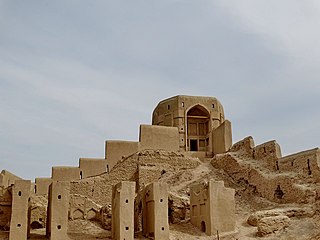
Zabol is a city and capital of Zabol County, Sistan and Baluchestan Province, Iran. Zabol is near the border with Afghanistan. Referred to as Sistan until the late 1920s, the city was renamed Zabol by Reza Shah Pahlavi. At the 2006 census, its population was 130,642, in 27,867 families.
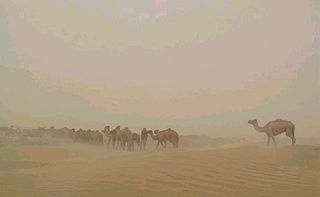
Nimruz or Nimroz is one of the 34 provinces of Afghanistan, located in the southwestern part of the country. It lies to the east of the Sistan and Baluchestan Province of Iran and north of Balochistan, Pakistan, also bordering the Afghan provinces of Farah and Helmand. It has a population of about 186,963 people. The province is divided into five districts, encompassing about 649 villages.

The Saffarid dynasty was a Persianate dynasty of eastern Iranian origin that ruled over parts of Persia, Greater Khorasan, and eastern Makran from 861 to 1003. One of the first indigenous Persian dynasties to emerge after the Islamic conquest, the Saffarid dynasty was part of the Iranian Intermezzo. The dynasty's founder was Ya'qub bin Laith as-Saffar, who was born in 840 in a small town called Karnin (Qarnin), which was located east of Zaranj and west of Bost, in what is now Afghanistan. A native of Sistan and a local ayyār, Ya'qub worked as a coppersmith (ṣaffār) before becoming a warlord. He seized control of the Sistan region and began conquering most of Iran and Afghanistan, as well as parts of Pakistan, Tajikistan and Uzbekistan.

Zaranj is a city in southwestern Afghanistan, which has a population of 160,902 people as of 2015. It is the capital of Nimruz Province and is linked by highways with Lashkargah and Kandahar to the east, Farah to the north and the Iranian city of Zabol to the west.
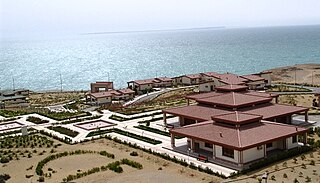
Chābahārpronunciation (help·info) is the capital city of Chabahar County, Sistan and Baluchestan Province, Iran. It is a free port situated on the coast of the Gulf of Oman, and is Iran's southernmost city. The sister port city of Gwadar in Balochistan, Pakistan, is located about 170 kilometres (110 mi) to the east of Chabahar.

Ya'qūb ibn al-Layth al-Saffār, was a coppersmith and the founder of the Saffarid dynasty of Sistan, with its capital at Zaranj. Under his military leadership, he conquered much of the eastern portions of Greater Iran consisting of modern-day Iran, Afghanistan, Turkmenistan, Uzbekistan, Tajikistan as well as portions of western Pakistan and a small part of Iraq. He was succeeded by his brother, Amr ibn al-Layth.
Shahristan, or Sharistan (شارستان), is a district in Daykundi province in central Afghanistan. Daykundi var established as a province in the distant north area in Uruzgan province in 2004,
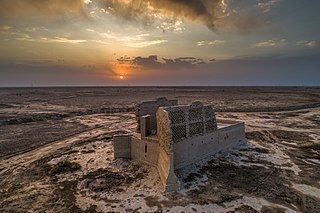
Sistān, known in ancient times as Sakastān, is a historical and geographical region in present-day Eastern Iran and Southern Afghanistan. Largely desert, the region is bisected by the Helmand River, the largest river in Afghanistan, which empties into the Hamun Lake that forms part of the border between the two countries.

Communities of various religious and ethnic background have lived in the land of what is now Afghanistan. Before the Islamic conquest, south of the Hindu Kush was ruled by the Zunbil and Kabul Shahi rulers. When the Chinese travellers visited Afghanistan between 399 and 751 AD, they mentioned that Buddhism was practiced in different areas between the Amu Darya in the north and the Indus River in the south. The land was ruled by the Kushans followed by the Hephthalites during these visits. It is reported that the Hephthalites were fervent followers of the god Surya.
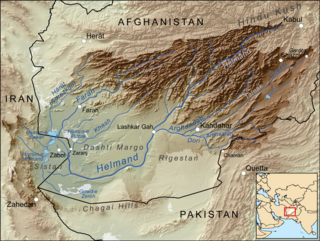
The Sistan Basin is an inland endorheic basin encompassing large parts of southwestern Afghanistan and minor parts of southeastern Iran, one of the driest regions in the world and an area subjected to prolonged droughts. Its watershed is a system of rivers flowing from the highlands of Afghanistan into freshwater lakes and marshes and then to its ultimate destination: Afghanistan's saline Godzareh depression, part of the extensive Sistan terminal basin. The Helmand River drains the basin's largest watershed, fed mainly by snowmelt from the mountains of Hindu Kush, but other rivers contribute also.
Abū ʿAbd al-Raḥmān ʿAbd Allāh ibn ʿĀmir ibn Kurayz (626–678) was a Rashidun politician and general, serving as governor of Basra from 647 to 656 AD during the reign of Rashidun Caliph Uthman ibn Affan. He was a cousin of the Caliph through his father. He is known for his administrative and military prowess including his successful campaigns of reconquest and pacification of former territories of the Sasanian Empire in what is now Iran and Afghanistan.
Milak is a village in Jahanabad Rural District, in the Central District of Hirmand County, Sistan and Baluchestan Province, Iran. At the 2006 census, its population was 2,385, in 444 families.

The ancient archaeological site of Bunjikat, also named Shahriston, is located near the town of Bunjikat, in the Shahristan Pass at the entrance of the Ferghana Valley, in Sughd Province of western Tajikistan, just west of the town of Kairma.
Zaranj District is a district of Nimruz Province, Afghanistan, containing the provincial capital city of Zaranj.

Dahan-e Gholaman or Dahaneh-e Gholaman is the modern name of a major Achaemenid center and archeological site in eastern Iran. It has been identified as Zranka/Zarin, the capital of the satrapy of Zranka/Drangiana.
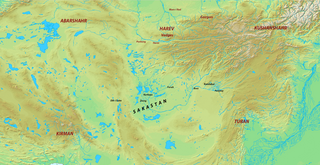
The Persian Empire's province of Sistan in the 7th century extended from the modern Iranian province of Sistan to central Afghanistan and Baluchistan province of Pakistan.
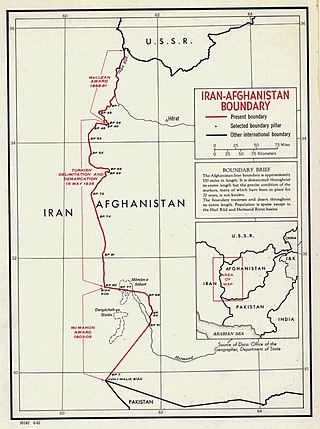
The Afghanistan–Iran border is 921 km (572 mi) in length and runs from the tripoint with Turkmenistan in the north to the tripoint with Pakistan in the south.
Al-Layth ibn al-Fadl al-Abiwardi was a provincial governor for the Abbasid Caliphate, serving in Egypt (798–803) and Sistan (815–819).

The capture of Zaranj, the capital of Nimruz Province, Afghanistan, occurred on 6 August 2021. According to the local officials, only the National Directorate of Security (NDS) and its forces had put up a fight against the Taliban, but they too eventually surrendered to the Taliban. Local officials had been requesting for reinforcements but received no response. Zaranj was the first provincial capital to be taken by the Taliban in their 2021 offensive and the first one to be captured since Kunduz in 2016.
References
- 1 2 Guy Le Strange. The lands of the eastern caliphate: Mesopotamia, Persia, and Central Asia, from the Moslem conquest to the time of Timur. Cambridge geographical series. General editor: F. H. H. Guillemard. reprint Publisher CUP Archive, 1930. Originally published 1905.